New Lawn seed dying after 4 beautiful weeks of growth!!!???
beddy3484
11 years ago
Featured Answer
Sort by:Oldest
Comments (14)
beddy3484
11 years agobeddy3484
11 years agoRelated Discussions
New home, new area, dying lawn?
Comments (7)I know I have blessed with this unusual rain. In May we had 16.5 inches and June is still higher than usual. I grew up in south Texas so I am no stranger to the heat, but I am a stranger to this shade. When I moved in I put thermometers around the house to help me judge the new climate. 15 oaks on 1/4 of an acre has turned out to be quite a niche for me. I checked all the thermometers, at the end of our only sunny week in June and there was an 18 degree difference between my house/lawn and my neighbors! My electric bill was also much lower compared south Texas-go figure. As for reseeding, If it does die I will just reseed it later. I still have about 5 lbs left for this fall. I purchased about 11 lbs of seed at homedepot for $2 because I had asked if they had any seed with holes in the bag they couldn't sell. Sure enough luck was on my side. The heat-tolerant Kentucky was the closest thing to my zone so thats what I chose. What mattered most to me was that my lawn didn't end up in my neighbors driveway like it had been for the last 4 years. Also, this is not my house, it is a rental so I'm not game for sod. I will be moving out in 13 months as soon as I finish my never ending research. I will probably be headed to boerne texas (were St. Augustine is banned). Heather...See MoreNew Bermudagrass Lawn Dying!
Comments (23)Assuming you stick to monthly watering between now and April, you have a shot at the lawn recovering without continued fungal issues. Winter's cooler temperatures work some magic in the soil. If you have sprayed fungus killers, I would suggest top dressing with 1/4 inch of compost (1/4 inch = 1 cubic yard per 1,000 cubic feet). You don't have to be too particular about applying it but you do need to be sure you sweep it all down into the surface of the grass. If you can look at it from the angle of the picture above and see any compost when you are done sweeping, then you are not done sweeping. I use a push broom to do that. You can use the back of a rake or anything that is not a stiff rake. Leaf rake is okay. The purpose of the compost is to replace and restore the population of microbes in your soil/sand. The fungicide did a number on your soil and will leave it unbalanced in a biological sense. In this state it is more susceptible to other diseases. Even a little bit of compost fixes that. And if you can find ordinary corn meal, you can apply that at 20 pounds per 1,000 square feet as often as you want to or can afford to. That helps to restore the population of organic disease fighting microbes....See MorePlease help, new lawn is dying
Comments (5)It is probably too late to do anything now. The time to winterize was right after the grass stopped growing and before the first frost. I'm thinking you're having a pretty good "frost" right now up there, because we are almost getting it in Texas. Similarly, the time to seed was in the fall, not in the upcoming spring. If you try to seed in the spring, you will end up with a lot of crabgrass by July. I would watch it over the winter and check back with the current condition of the grass in early March. There is something you can do now, which won't hurt anything and might help with your disease. Corn meal is an organic approach to disease control. One of the early decomposers of corn is a fungus called Trichoderma (try ko DER ma). Trichoderma is a predatory fungus which preys on other fungi...like pythium. It is also a weak, but not insignificant, organic fertilizer. I used corn meal exclusively for many years when the cost was down around $3 for a 50-pound bag. It was only when the price went above $10 that I changed to alfalfa pellets. Invariably, though, I use some corn meal every year for my own fungal disease control. The application rate is 20 pounds per 1,000 square feet or (10 kilos per 100 square meters). You can use more and not hurt a thing. You can put it down now or wait until the snow melts. I am also hearing more and more about using a simple soap as a non-chemical approach to fungal disease control. Yes I realize soap is a chemical but it not the deadly, harsh, fungicides you see on the market. I'm talking about baby shampoo or any other clear shampoo. These are very simple soaps without any antibacterial qualities. The application rate is 3 ounces per 1,000 square feet (roughly 3 ounces per 100 square meters). You can use 2x, 4x or more and it won't hurt a thing. This should be sprayed on the grass, not snow. The soap will also help with your drainage, because it allows water to penetrate deeper into the soil. Now the question is what to do about the grass in the spring. There are a lot of magical, unexplainable things that happen to the soil and lawns in the cold of winter. If you have a blend of grasses, then there's a great chance the disease will be gone no matter what you do. Also there is a reasonable chance the grass will return by itself where it is brown now. Do not jump the gun on fertilizing. Spring grass will grow like gangbusters in the spring. The time to fertilize is after the grass stops the really fast growth. You and your lawn mower will know when that is. Usually it is in May to late May. Then, if you are using chemical fertilizers, you can fertilize. If you are using organic fertilizers, like alfalfa pellets, you can fertilize any time, but you still don't need to help it along early. For example if you don't do anything you'll likely have to mow every 5 days. If you fertilize with chemicals you'll likely have to mow every 2-3 days to keep it from getting too tall before mowing again. If you use an organic fertilizer, the growth won't be as spectacular as with chemicals, but you will likely notice a little extra boost. Your watering regimen sounded good to me. Once per week is the max for the hottest part of summer. Of course Mother Nature helps out, too. With temps below 70 you should not water more frequently than once a month. When you do water apply a full inch. Use cat food or tuna cans to measure the time it takes your sprinklers to fill them up. That's your target. Mine takes 8 full hours to fill the cans. My neighbor's system takes 20 minutes. Every system is different. When the temps get into the 70s you can move to once every 3 weeks. Temps in the 80s you can water every other week. If you ever get temps in the 90s then go to every 7 days. Always apply the full inch unless you've had rain, and then just supply the rest of the inch you didn't get from rain. The reason for this deep and infrequent watering is to allow the surface of the soil to completely dry out before you water again. Weed seeds are on the surface and need continual moisture to germinate. If you deprive them of that, then you won't have weeds. It also helps to keep the grass mowed up at least 3.5 inches. Tall grass needs less water than short grass. Tall grass grows deeper roots to get that deep water you're applying. Tall grass shades out any weed seedlings that might germinate and helps suppress them or shade them out altogether. Tall grass does not grow any faster than short grass. I'm out of ideas...somehow that seems like the info was scattered all over the map, but that's all the more clear my brain is working right now. Hope that helps....See MoreSpearmint Growth in 4 weeks after full prune
Comments (5)Just an update for anyone interested: It appears that the plant has not grown much from this latest picture. There have be changes though. The plant has went to seed on many of its stems. I have been pruning the seeded portions and using for my daily mint tea, as well as pruning the fading and dying foliage that often occurs in the shady areas of the plant. The stems seem to be growing new stems, and the roots are continuing to grow. Amazing that the roots should be able to fill this entire container so fast!... The main reason why I haven't harvested is so that that plant can get as much energy from the sun as possible to grow the roots to fill the container before it's brought back in in about 5 days for the fall and winter season. shane & seysonn, thanx : ) This post was edited by bedtime on Fri, Aug 9, 13 at 10:15...See Morenearandwest
11 years agobeddy3484
11 years agotiemco
11 years agonearandwest
11 years agokidhorn
11 years agoibanez540r
11 years agokidhorn
11 years agoJackallenss
11 years agokidhorn
11 years agoJackallenss
11 years agokidhorn
11 years ago
Related Stories
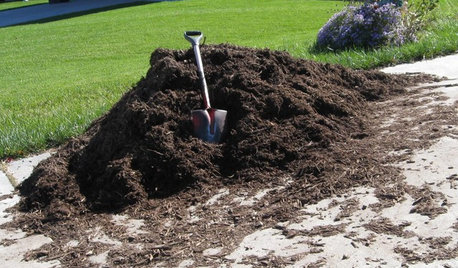
FRONT YARD IDEASBefore and After: Front Lawn to Prairie Garden
How they did it: Homeowners create a plan, stick to it and keep the neighbors (and wildlife) in mind
Full Story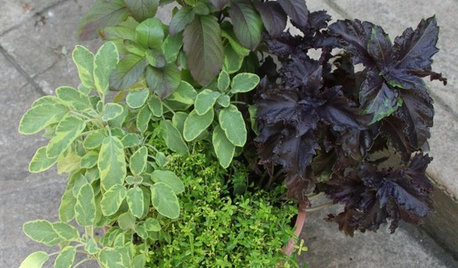
CONTAINER GARDENS8 Easy Container Plants to Grow From Seed
Get beautiful blooms and herbs in summer by starting these choice garden picks from seed in spring
Full Story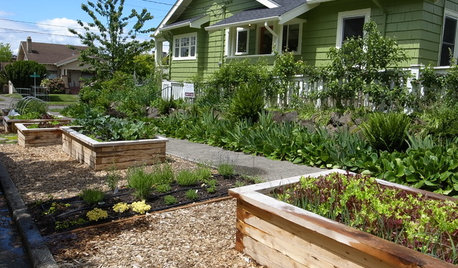
BEFORE AND AFTERSSee 6 Yards Transformed by Losing Their Lawns
Wondering whether a turf lawn is the best use of your outdoor space? These homeowners did, and they found creative alternatives
Full Story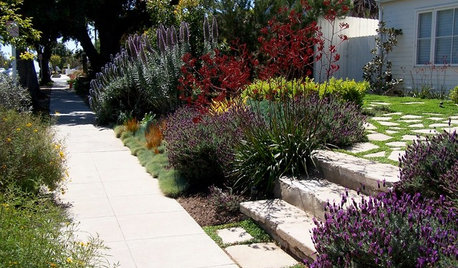
LAWN ALTERNATIVESStop Fighting the Patchy Lawn!
Here are 3 situations where a garden may be a better idea than more turfgrass
Full Story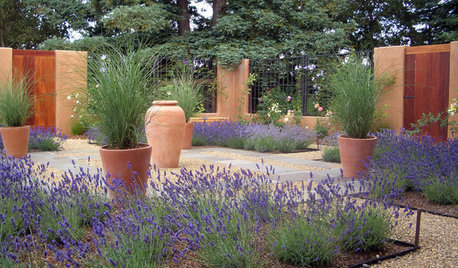
SAVING WATERXeriscape Gardens: How to Get a Beautiful Landscape With Less Water
Conserve water and make gardening much easier with the xeriscape approach’s 7 principles
Full Story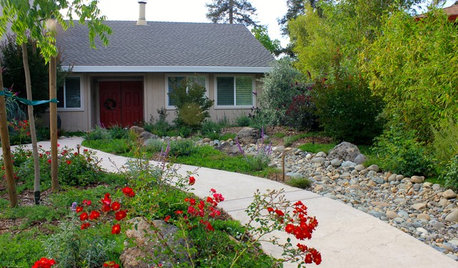
LANDSCAPE DESIGNCalifornia Says Goodbye to the Sprawling Ornamental Lawn
New state rules will effectively limit turfgrass to 25 percent of the landscape in most new and renovated yards
Full Story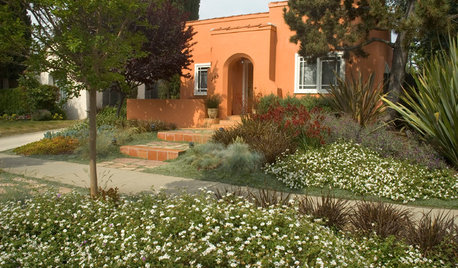
GREAT HOME PROJECTSHow to Replace Your Lawn With a Garden
New project for a new year: Lose the turfgrass for energy savings, wildlife friendliness and lower maintenance
Full Story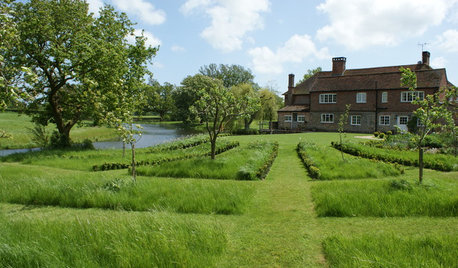
GRASSESHow to Rock a Lawn
Weekend Project: The key to healthy grass begins with the soil. If turf works for you, here’s how to fix it and keep it looking its best
Full Story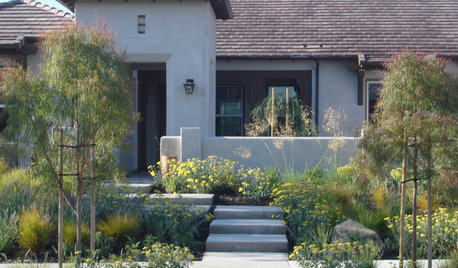
LANDSCAPE DESIGNGet Along With Less Lawn — Ideas to Save Water and Effort
Ditch the mower and lower your water bill while creating a feast for the eyes with diverse plantings and gathering places
Full Story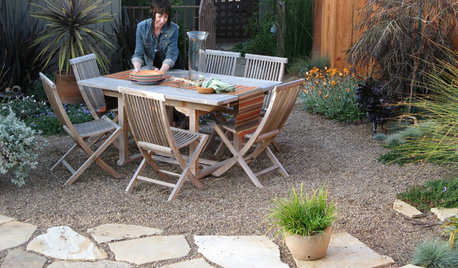
LANDSCAPE DESIGN15 Great Ideas for a Lawn-Free Yard
End the turf war for good with hardscaping, native grasses and ground covers that save water and are easier to maintain
Full Story



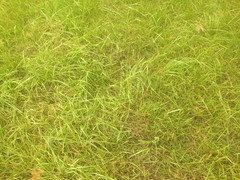
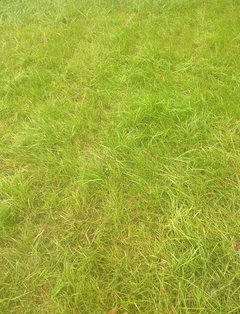
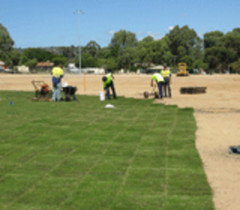
nearandwest